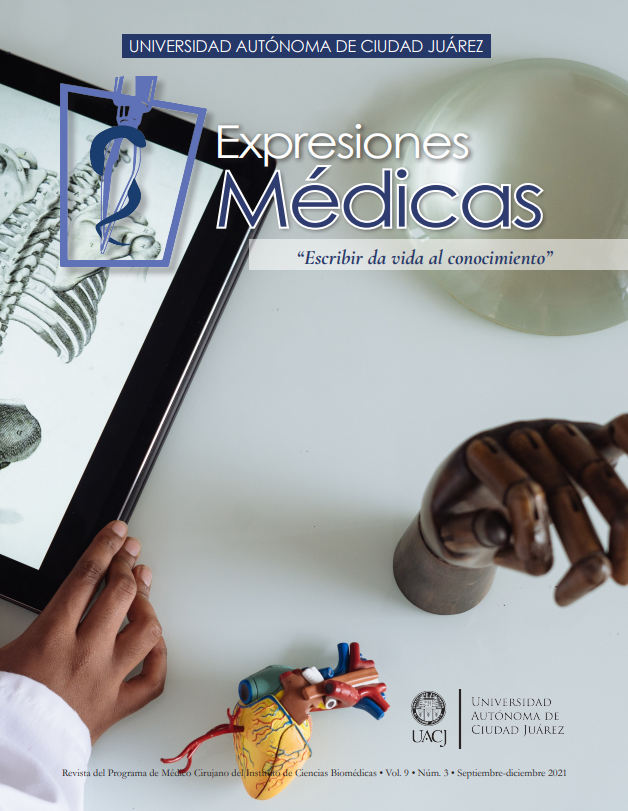Enfermedad del apóstol Pablo de Tarso: ¿psicológica, oftálmica o neurológica?
Palabras clave:
Parkinson, Parkinsonismo, Religión, San PabloResumen
El personaje bíblico Pablo de Tarso afirmó padecer alguna enfermedad, “Pues vosotros sabéis que a causa de una enfermedad del cuerpo os anuncié el evangelio al principio; […] por la prueba que tenía mi cuerpo […]” (Gl 4.13-14). Su primer cuadro clínico coincidió con su conversión y con posterioridad presentó una sintomatología relacionada con la enfermedad de Parkinson o parkinsonismo. Debido a esta afección sufrió inconvenientes motores, tales como temblor, rigidez, inestabilidad postural, debilidad, así como también no-motores: cambios cognitivos y alucinaciones visuales y auditivas, que determinaron varios diagnósticos, entre oftalmológicos, neurológicos, psiquiátricos, psicológicos, sociológicos, quirúrgicos, que intentaron dar con una teoría que explicara su patología.
Descargas
Citas
Biblia Plenitud. Santa Biblia. Versión Reina Valera, 1960. Nashville, Tennessee, Estados Unidos de América: Grupo Nelson. 2008.
Landsborough D. St Paul and Temporal Lobe Epilepsy. J. Neurol., Neurosurg., Psych., 1987; 50: 659-664.
Masia SL, Devinsky O. Epilepsy and Behavior: A Brief History. Epil. Behav., 2000; 1: 27-36. https://doi.org/10.1006/ebeh.1999.0021.
Devinsky O, Lai G. Spirituality and Religion in Epilepsy. Epil. Behav., 2008; 12: 636-643.
Muhammed L. A Retrospective Diagnosis of Epilepsy in Three Historical Figures: St Paul, Joan of Arc and Socrates. J. Med. Biorgr., 2013; 21(4): 208-211. https://doi.org/10.1177/0967772013479757.
Bullock JD. Was Saint Paul Struck Blind and Converted by Lightning? Surv. Ophthalmol., 1994; 39(2): 151-160.
Rempel MH. Daybreak 68: Nietzsche’s Psychohistory of the Pre-Damascus Paul. J. Nietzsche Stud., 1998; 15: 50-58.
Sacks O. Despertares (5.ª ed.). Madrid: Anagrama. 2005.
Manzarbeitia Valle S. San Pablo. Rev. Dig. Iconogr. Med., 2015; 7(14): 39-61. https://www.ucm.es/bdiconografiamedieval/san-pablo
García Ruiz PJ. Neurología bíblica. Rev. Neurol., 1996;24(129): 580-581.
García Ruiz PJ. Prehistoria de la enfermedad de Parkinson. Neurología, 2004; 19(10): 735-737.
Turliuc S, Costea C, Cucu A, Dumitrescu A, Dumitrescu G, Turliuc D. Biblical Descriptions of Spinal Neurological and Neurosurgical Pathology. Roman. Neurosurg., 2016; 30(3). https://doi.org/10.1515/romneu-2016-0056.
Diéguez-Campa C, Pérez-Neri I. De los orígenes de la parálisis agitante al desarrollo de un modelo experimental para su estudio. Arch. Neurocienc., 2017; 22(3): 73-77.
Deutschländer AB, Ross OA, Dickson DW, Wszolek ZK. Atypical Parkinsonian Syndromes: A General Neurologist’s Perspective. Eur. J. Neurol., 2018; 25(1): 41-58. https://doi.org/10.1111/ene.13412.
Bigman, DY, Bobrin BD. Von Economo’s Disease and Postencephalitic Parkinsonism Responsive to Carbidopa and Levodopa. Neuropsychiatr Dis. Treat., 2018; 14: 927- 931. https://doi.org/10.2147/NDT.S153313.
Osborne RE. St. Paul’s Silent Years. J. Bibl. Literat., 1965; 84(1): 59-65. Retrieved 09-03-2019, from www.jstor.org/stable/3264073.
Rodríguez Martín YN, Pola Alvarado L, Juvier Riesgo T, Cabal Rodríguez R, Soto Labastida A, Pérez García E. Manifestaciones neurooftalmológicas en la enfermedad de Parkinson. Rev. Cub. Oftalmol., 2013; 26(1): 170-179. http://scielo.sld.cu/scielo.php?script=sci_arttext&pid=S086421762013000100017&lng=es.
Diederich NJ, Stebbins G, Schiltz C, Goetz CG. Are Patients with Parkinson’s Disease Blind to Blindsight? Brain, 2014; 137(6):1838-1849. https://doi.org/10.1093/brain/awu094.
Ekker MS, Janssen S, Seppi K et al. Ocular and Visual Disorders in Parkinson’s Disease: Common but Frequently Overlooked. Parkinsonism Relat. Disord., 2017; 40: 1-10. DOI: 10.1016/j.parkreldis.2017.02.014.
Inzelberg R., Kipervasser S. & Korczyn A. D. Auditory hallucinations in Parkinson´s disease. J. Neurol. Neurosurg. Psychiatry, 1998; 65: 533-535. https://doi.org/10.1136/jnnp.64.4.533.
Eversfield CL, Orton LD. Auditory and Visual Hallucination Prevalence in Parkinson’s Disease and Dementia with Lewy Bodies: A Systematic Review and Meta-analysis. Psychol. Med., 49: 2342-2353. https://doi.org/10.1017/S0033291718003161.
Murray ED, Cunningham MG, Price BH. The Role of Psychotic Disorders in Religious History Considered. J. Neuropsych. Clin. Neurosci., 2012; 24(4): 410-426. https://doi.org/10.1176/appi.neuropsych.11090214.
Descargas
Publicado
Cómo citar
Número
Sección
Licencia
Derechos de autor 2022 Mario Josué Sandoval Falconi

Esta obra está bajo una licencia internacional Creative Commons Atribución 4.0.



